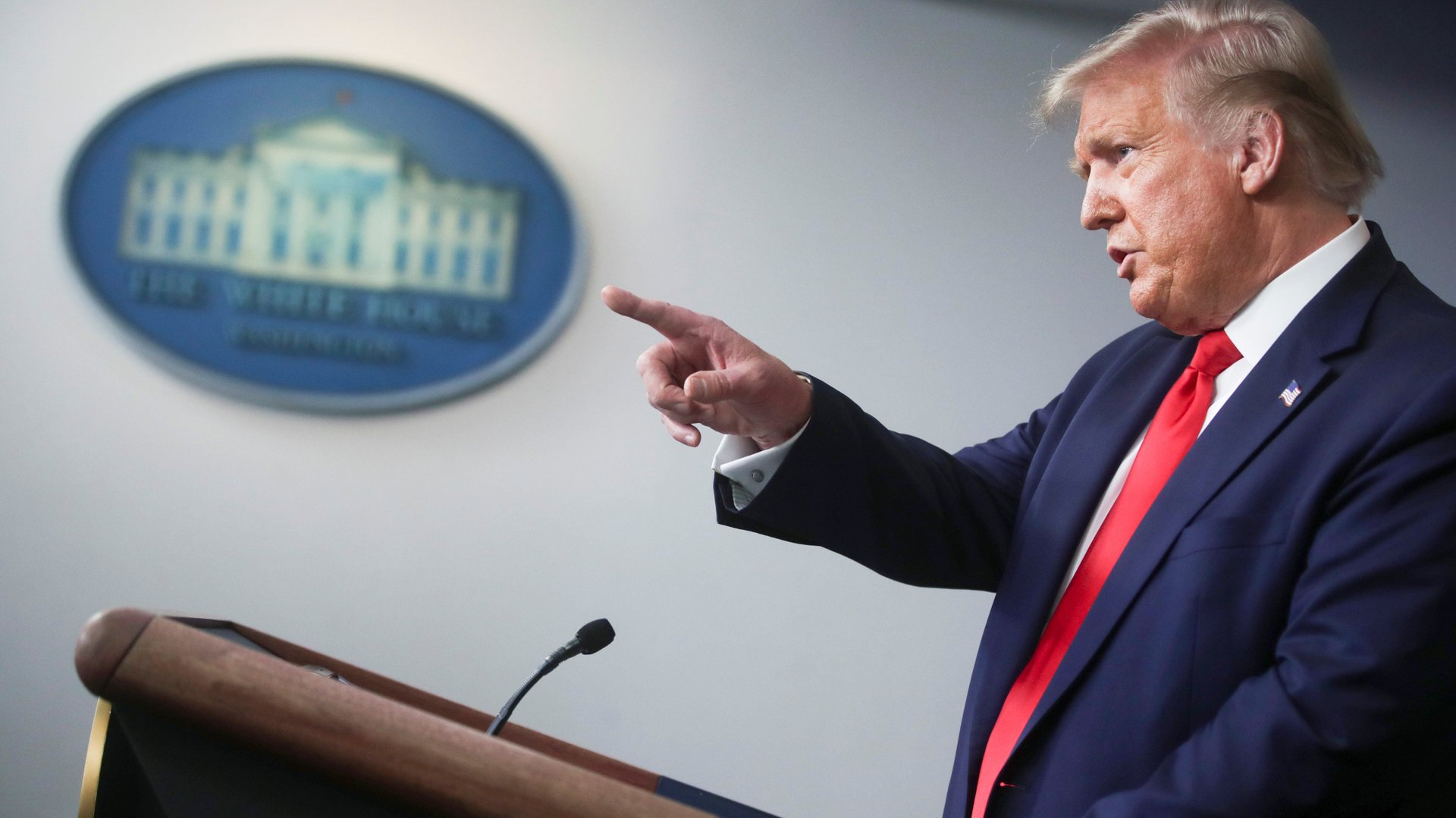Trump’s latest offensive against H-1B visas is an election ploy based on misinformation
It’s an election year in the US, and Donald Trump is playing to the gallery—perhaps at the cost of America’s long-term health.


It’s an election year in the US, and Donald Trump is playing to the gallery—perhaps at the cost of America’s long-term health.
On Aug. 3, US president Trump signed an executive order that bars federal contractors from hiring non-American workers. The order is aimed at protecting American jobs, Trump said.
“Within 45 days of the date of this order, the secretaries of labor and homeland security shall take action, as appropriate and consistent with applicable law, to protect United States workers from any adverse effects on wages and working conditions caused by the employment of H-1B visa holders at job sites,” the president wrote in the order.
The same day Trump also fired the chair of the Tennessee Valley Authority, the largest federally-owned power provider, which had plans to outsource a fifth of its tech jobs to foreign companies.
Experts in India—the country that gets a majority of the long-term H-1B work visas each year—believe that the move will not help American jobseekers, and is just an election-related gimmick.
“In many instances, employers like Facebook, Infosys, IBM, and Google spend thousands of dollars to sponsor H-1B workers. This is more than it would cost them to hire local employees. Why would they spend that if they could find local workers?” said Poorvi Chothani, managing partner at the immigration law firm, LawQuest. “This is merely aimed at his vote bank—telling them ‘see I’m protecting your jobs!’ The H-1B programme only grants 85,000 jobs every year so how many jobs is he protecting?”
Incumbent Trump is gunning for re-elections in November 2020.
Misleading the crowd
Trump’s order appears to have been based on “misperceptions and misinformation,” Indian IT industry trade body Nasscom said in a statement on Aug. 4. “There is a huge shortage of STEM skills in the US, that workers on short-term non-immigrant visas like H-1B and L-1 help bridge.”
Most H-1B workers fill technology positions and yet, there’s plenty of room for American workers. In the 30-day period ending May 13, there were over 625,000 active job vacancy postings advertised online for jobs in common computer-related occupations, Nasscom noted.
In addition, for computer-related occupations, the unemployment rate in the US declined to 2.5% in May 2020 from 3% in January 2020. In contrast, the unemployment rate for all other occupations tripled to 13.5% from 4.1% during the same period.
Moreover, federal agencies employ a sliver of the total H-1B population. Some 2,000-odd H-1B visa-holders were directly or indirectly on federal payrolls, an October 2019 Bloomberg News report said. That’s too small a number to warrant a targeted blitz, experts said.
Visa virtue signalling
The August 3 order also hints at penalising federal contractors and their subcontractors for past decisions. Trump has ordered federal department heads to evaluate contracts undertaken by companies in the last two years. They’re meant to assess whether the hiring of foreign talent or off-shoring of US projects adversely affected opportunities for American workers.
“I’m not against re-hauling the H-1B programme as it is not objective enough at present and subject to USCIS’ discretionary powers as well as a random lottery. But gathering old data to re-haul it, when we are in unprecedented times? That seems like a nonsensical idea to me,” said Chothani.
Moreover, Trump’s proclamation is aimed to prevent foreign nationals from working with federal agencies because of national security risks. But that is nothing new. Checks and balances to prevent access to sensitive technology and protect national security are already built into the H-1B documents and other national laws, said Chothani.
For instance, the I-129 form—the H-1B petition—asks workers if they’ll be working with sensitive data in areas like defense, law enforcement, diplomacy, or national security.
Short-sighted
Ever Since Trump took office in 2017, there’s been increased scrutiny and denial of H-1B applications. This latest attack comes less than two months after the Trump administration suspended non-immigrant work visas like the H-1B and L-1 for the rest of 2020.
In all these moves, what the Trump administration fails to understand is the fact that blocking foreign workers will not suddenly equip Americans with the skills needed for the jobs. This short-sightedness can have serious ramifications in the long-term, experts have warned time and again.
The country might stagnate or have to “dumb down their technology to meet the skill sets available locally or send tasks where the high-end skills are available,” said Chothani. “You may not see an immediate effect but it will have a snowball effect on the economy in the coming years.”
The most worrying part of the executive order is the requirement to take action within 45 days, without any clarity on what the action could be. Nasscom believes that the administration may tweak the definitions of “specialty occupation,” “employer,” and “employer-employee relationship,” to make the process even harder at the end of the 45 days.
While such adjustments could be on the cards, aspirants, and visa-holders can take some solace in the fact that there may not be another big whammy coming there way.
“If they want to eliminate the H-1B programme they would have to introduce a bill in Congress, and it has to pass into law,” said Chothani. “Maybe we’ll see something proposed or announced soon but, in my opinion, no major changes to the programme can be sprung upon the public and implemented in 45 days.”